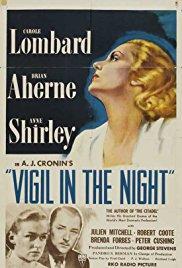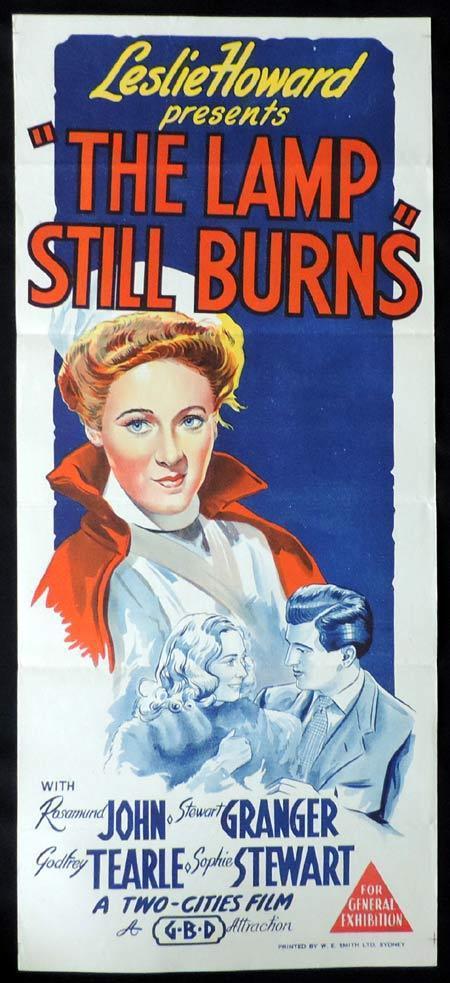Book Review by George S: One Pair of Feet is Monica Dickens’ 1942 fictionalised memoir of her time as a hospital nurse during the early years of the second world war. Its title marks it as a successor to her earlier book, One Pair of Hands, which had recorded her experiences when, breaking free of middle-class expectations, she had worked as a housemaid in Kensington.In the chatty first chapter, she presents herself as wanting to do something for the war effort. She rejects several options – the services because she doesn’t look so good in uniform, and office work because:
‘Apart from the question of my hips again (sitting is so spreading) they didn’t seem to want me.’
She claims that she decided to become a nurse because she was inspired by seeing Madeleine Carroll in Vigil in the Night. But Madeleine Carroll was not in that film. It starred Carole Lombard. Maybe that doesn’t bode well for the accuracy of the rest of the book.

Monica Dickens writes like an explorer going into unknown territory, but there is not much in this book that will surprise readers familiar with hospital novels of the thirties. Last year I reviewed the novel Sister Anne Resigns by Josephine Elder (pseudonym of Dr Olive Potter, one of the first female doctors to be trained in a London hospital). That book was published in 1931, and vividly describes the hardships of a nurse’s life: the hard physical work; the pettiness of the regulations and discipline; the spitefulness with which some Sisters wield their power over those below them. All of these feature in One Pair of Feet as well, so Monica Dickens is not exactly breaking new ground.
She writes clearly and readably, with a knack of making you interested in the current episode, even though the episodes together do not lead to very much. It is a ‘one-thing-after-another’ sort of book, and would probably have been good undemanding reading during an air-raid.
The strapline of the Virago Modern Classics edition is: ‘The entertaining memoirs of a young nurse during World War II’, and it does indeed set out to be entertaining, with a rather unremittingly jaunty tone. The war makes only a marginal impact on the book, though. The nearest it comes to being a war story is when the hospital is on alert because there has been a severe air raid not far away. They are expecting casualties. What happens, though, is bathos. The invalids who arrive are old men, mostly senile, who had been residents in a hospital nearer to the air raid, and cleared out to make room for the wounded. the war is something that is happening elsewhere, and this book will disappoint anyone expecting something like the First World War nursing memoirs that are explorations of the violent effects of war.
While reading, I became increasingly aware of the book’s attitude to class. Monica Dickens manages to make it clear, without explicitly telling us, that she is of a different class from her fellow-nurses. She is an educated young woman, and has little in common with the others, except for a select few. Her comments on them are mostly unsympathetic.
She seems not to be a particularly good nurse. She puts most of her tellings-off from Sister down to the spite and resentment of her superiors, but one can’t help but wonder. Once again there are touches of social one-upmanship. She gets to kow one of the doctors socially, and is delighted by a Sister’s discomfiture when he greets her, a mere nurse, with ‘Here is the book I said I’d lend you.’
It is perhaps a sign of the book’s honesty that Dickens communicates no particular empathy with her patients. Most of them are viewed negatively, but she reserves her special resentment for the patients on the Private ward, who are paying for special treatment, and expect nurses constantly to be at their beck and call. They expect the privileges of wealth, but Dickens expresses the feeling so often found in middlebrow fiction, a dislike of the aspiring nouveau-riche, who have money but lack culture. She mocks, for example, the wealthy and pretentious woman who pronounces Petit Beurre as ‘Petty Bewer’.
Monica Dickens’s nursing career ends when she publishes a magazine story about hospital life. Matron tells her that she must never do such a thing again.
‘Why not?’ I asked, red in the face with all the things I wanted to say and didn’t dare.’
‘Apart from being an unforgiveable breach of etiquette, you only make yourself extremely ridiculous.’
Dickens replies by giving in her notice. Matron asks ‘Why?’
‘Please, Ma’am,’ I said, ‘I want to go and build a tank.’

The novel was filmed in 1943 as The Lamp Still Burns. A notice before the titles announces that the film is ‘A Tribute to all who Nurse’, made ‘with the assistance and collaboration of the Ministry of Health’. The titles appear over a picture of a statue of Edith Cavell. Even before the story starts, it’s clear that the tone of this film will be very different from that of the novel.
The heroine of this version is Hilary Clarke, an architect. An early scene sees her clashing with a masterful industrialist played by Stuart Granger in a way that tells anyone attuned to the conventions of 1940s films that their relationship will be the film’s main emotional theme. (There is no romantic interest in the novel.) Seeing a car accident, and the ‘calm unhurried efficiency’ with which the hospital deals with it convinces her that she should give up architecture and take up nursing. (She had only become an architect to please her father, you see, and he has recently died.) She joins a London hospital, not a regional one as in the novel. We see a strict Sister telling off Helen for petty infringements of regulations (like not wearing her cuffs) but then we get what isn’t shown Dickens’s book – Sister saying approvingly and wisely that Nurse Clarke will make a good nurse one day if she learns discipline.
There is high drama when an industrial accident injures Stewart Granger and his violinist fiancée. Stewart Granger has a punctured lung, and has to have an emergency operation during an air raid. The operation is dramatically done, but afterwards he suffers from amnesia, and falls in love with Hilary Clarke, having forgotten Pamela, the violinist. In time, Pamela realises that Stewart Granger no longer loves her, and rather heroically renounces him.
Hilary is quite unfairly dismissed as a nurse for indiscipline. She appeals to the hospital board, making a fine speech about how she wants to remain a nurse for life, even though this will scupper her chances of marriage. Stewart Granger is there to hear what she says. They end with a handshake, and she goes on to a career among the bedpans.
So the upshot of the film is exactly the opposite of that of the book. No going off to build tanks. It makes you wonder why the producers paid for the rights to this book, when they were not even going to keep the title. Probably a case of their buying it up because it was a best-seller, and only belatedly realising that what they had bought was not quite the morale-builder that the wartime public were supposed to need.

